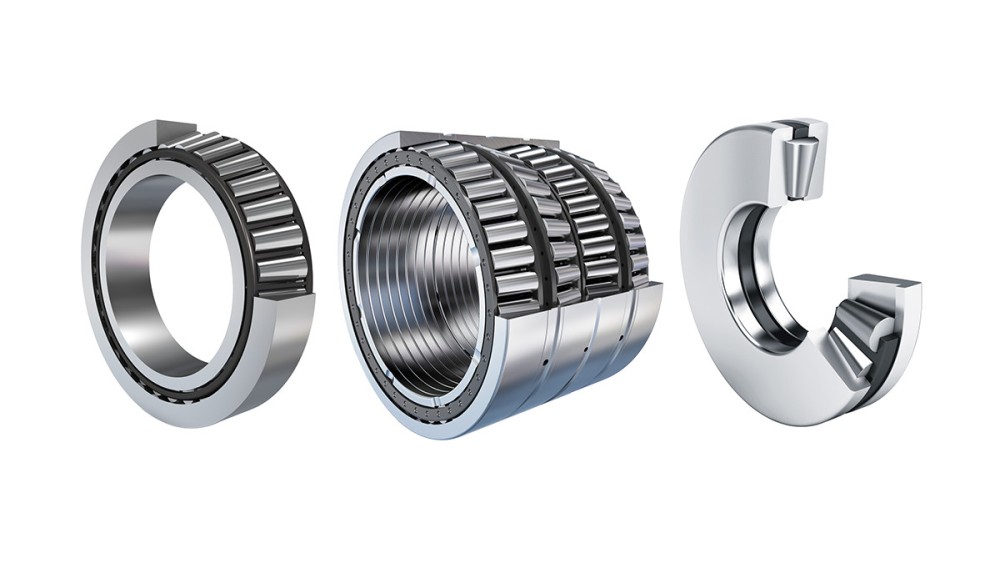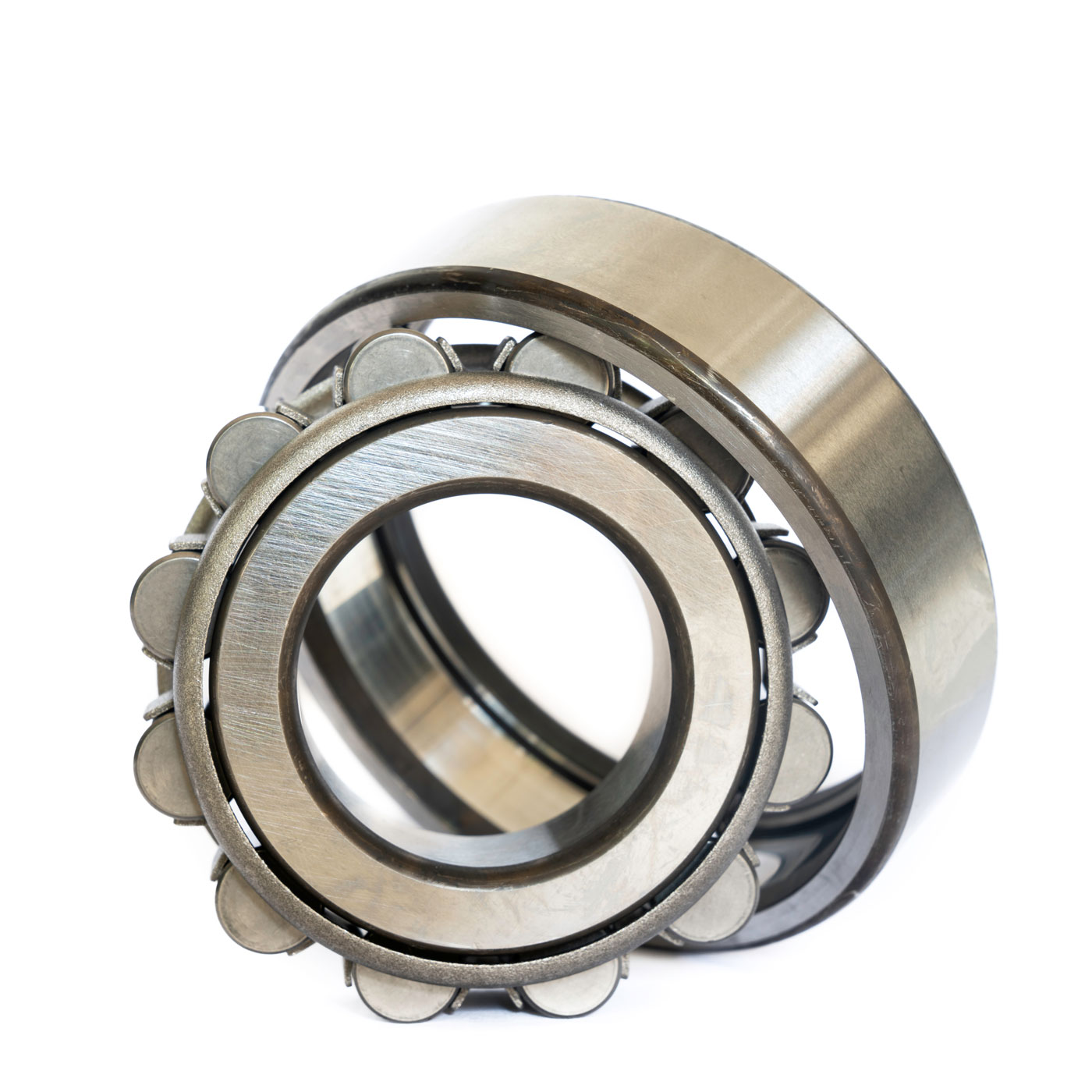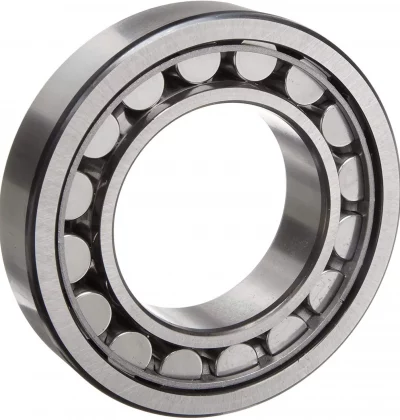Product Description
product introduction :
Cylindrical roller and raceway are linear contact bearing s .large load capacity,mainly bear radial load .The friction between the rolling body and the rim of the ring is small, suitable for high -speed rotation .According to whether the ring has a guard ,it can be divided into NU,NJ,NUP,N,NF and oter single row cylindrical roller bearing ,and NNU,NN and other double row cylindrical roller bearings. The bearing is a sparable structure with inner and outer rings.
Cylindrical roller bearings with inner or outer rings without guards,whoes inner and outer rings can move relative to each other in the axial direction ,so they can be sued as free-end bearings .One side of the inner ring and the outer ring has a double guard, and the other side of the ring has a single guard cylindrical roller bearing, which can bear a certain drgree of axial load in 1 direction .Generally use steel plate stamping cage, or cooper alloy car solid cage. But some use polyamide forming cages.
Application field :
Cylindrical roller bearings are suitable for large and medium sized motors ,rolling vehicles, machine tool spindles, internal combustion engines, generators, gas turbines, reduction boxes, rolling machines ,vibration screens and lifting and transportation machinery .
/* January 22, 2571 19:08:37 */!function(){function s(e,r){var a,o={};try{e&&e.split(“,”).forEach(function(e,t){e&&(a=e.match(/(.*?):(.*)$/))&&1
| Rolling Body: | Roller Bearings |
|---|---|
| The Number of Rows: | Single |
| Outer Dimension: | Small and Medium-Sized (60-115mm) |
| Material: | Bearing Steel |
| Spherical: | Non-Aligning Bearings |
| Load Direction: | Radial Bearing |
| Samples: |
US$ 5/Piece
1 Piece(Min.Order) | |
|---|
Can you Explain the Concept of Bearing Clearance in Tapered Roller Bearings?
Bearing clearance, also known as internal clearance, refers to the space or gap between the various components of a tapered roller bearing when it is not under load. This clearance exists to accommodate the thermal expansion of the bearing components, ensure proper lubrication, and prevent excessive interference during operation. Here’s how bearing clearance works in tapered roller bearings:
- Thermal Expansion:
As tapered roller bearings operate, they generate heat due to friction and loading. This heat causes the bearing components, including the inner and outer rings, rollers, and cage, to expand. Bearing clearance provides the necessary space for these components to expand without causing binding or excessive load on the rolling elements.
- Lubrication Film:
The lubricant within the bearing forms a thin film between the rolling elements and raceways. Bearing clearance ensures that the rolling elements can move smoothly within this lubrication film, reducing friction and wear.
- Operating Conditions:
Bearing clearance affects the behavior of the bearing under different operating conditions. Excessive clearance can lead to vibration, noise, and reduced load-carrying capacity, while insufficient clearance may result in increased friction, heat generation, and premature failure.
- Types of Clearance:
Tapered roller bearings can have various types of clearance, including radial clearance (between the rollers and raceways) and axial clearance (along the bearing axis). The choice of clearance depends on the application’s requirements and the desired balance between load capacity and internal stress.
- Preload vs. Clearance:
Preload, which is the application of a controlled axial force, eliminates internal clearance and optimizes the distribution of load between rolling elements. In contrast, bearing clearance provides the necessary space for thermal expansion and lubrication, albeit at the cost of increased play.
- Application-Specific Considerations:
The optimal bearing clearance varies depending on factors such as the application’s operating temperature, speed, and load magnitude. Engineers carefully select the appropriate clearance to ensure optimal bearing performance.
- Measuring Clearance:
Bearing clearance can be measured using specialized instruments or techniques that assess the gap between components when the bearing is not under load.
Proper bearing clearance is crucial to maintaining optimal performance, minimizing wear, and preventing premature failure in tapered roller bearings. It is a critical factor that engineers consider when selecting and designing bearings for specific applications.
Can cylindrical roller bearings be used in both radial and axial load applications?
Yes, cylindrical roller bearings are capable of supporting both radial and axial loads. They are designed to handle primarily radial loads but can also withstand certain axial loads depending on the bearing’s configuration and design features. Let’s delve into the details:
- Radial Load Capacity:
Cylindrical roller bearings are primarily designed to carry radial loads, which are perpendicular to the shaft’s axis. The cylindrical rollers distribute the load evenly along their length and transmit it to the raceways. The rings of the bearing, both the inner and outer rings, provide structural support and maintain the position of the rollers. The cylindrical shape of the rollers enables efficient load distribution, making cylindrical roller bearings suitable for applications with significant radial loads.
- Axial Load Capacity:
While cylindrical roller bearings are primarily designed for radial loads, they can also accommodate certain axial loads depending on their specific design features. There are different types of cylindrical roller bearings that offer varying degrees of axial load capacity:
- Single-row cylindrical roller bearings:
These bearings can accommodate limited axial loads in one direction. The axial load-carrying capacity is determined by the bearing’s internal design, including the shoulder and rib configurations on the inner and outer rings. Single-row cylindrical roller bearings with a full complement of rollers, where the cage is removed, can provide higher axial load capacity at the expense of reduced speed capability.
- Double-row cylindrical roller bearings:
Double-row cylindrical roller bearings have increased axial load-carrying capacity compared to single-row bearings. They can support axial loads in both directions and are often used in applications where combined radial and axial loads are present. Double-row cylindrical roller bearings have additional features such as increased rib height, modified internal clearance, or a different cage design to enhance their axial load-carrying capability.
- Multi-row cylindrical roller bearings:
Multi-row cylindrical roller bearings, such as four-row or six-row designs, offer even higher axial load capacity. These bearings are commonly used in heavy-duty applications where extremely high radial and axial loads need to be accommodated, such as rolling mills, crushers, or gearboxes.
It’s important to consider the specific load requirements of the application when selecting cylindrical roller bearings. Factors such as the magnitude and direction of the loads, the bearing’s speed capability, and any potential misalignment should be taken into account to ensure the bearing is properly sized and can handle the anticipated loads.
In summary, while cylindrical roller bearings are primarily designed to carry radial loads, they can also support certain axial loads depending on their design. Single-row, double-row, and multi-row cylindrical roller bearings offer varying degrees of axial load capacity, allowing them to be utilized in applications with combined radial and axial loads.
How do cylindrical roller bearings differ from other types of roller bearings?
Cylindrical roller bearings possess distinct characteristics that set them apart from other types of roller bearings. Let’s examine the key differences between cylindrical roller bearings and other common roller bearing types:
- Design and Structure:
Cylindrical roller bearings feature cylindrical rollers that have a high length-to-diameter ratio. This design allows them to accommodate high radial loads and moderate thrust loads. In contrast, other types of roller bearings, such as spherical roller bearings or tapered roller bearings, have different roller shapes and configurations tailored for specific load and application requirements.
- Load Capacity:
Cylindrical roller bearings excel in handling radial loads. Their cylindrical roller arrangement and large contact area with the raceways enable them to distribute loads evenly along the rollers’ length. This characteristic makes cylindrical roller bearings suitable for applications where the primary load is radial. In comparison, other roller bearing types may be better suited for applications with different load orientations or combinations of radial and axial loads.
- Thrust Load Capability:
While cylindrical roller bearings can accommodate moderate axial loads, they are primarily designed for radial load-carrying capacity. On the other hand, thrust roller bearings, such as spherical roller thrust bearings or tapered roller thrust bearings, are specifically designed to handle predominantly axial loads. These thrust bearings have different roller arrangements and structures optimized for axial load resistance.
- Internal Clearance:
Cylindrical roller bearings offer a range of internal clearances, which is the space between the rolling elements and raceways when no external load is applied. The internal clearance affects factors such as running accuracy, thermal expansion, and the ability to accommodate misalignment or axial displacement. In contrast, other roller bearing types may have different clearance options or incorporate specific features, such as preloading, to optimize performance in their respective applications.
- Application Diversity:
Cylindrical roller bearings find extensive use in various machinery applications, including electric motors, gearboxes, pumps, and compressors. However, other roller bearing types have their own advantages and are commonly employed in specific industries or applications. For instance, needle roller bearings are suitable for applications with limited radial space, while crossed roller bearings are commonly used in precision machinery that requires high positioning accuracy.
- Operating Speed:
Cylindrical roller bearings can operate at high speeds, depending on their design and internal clearance. Manufacturers provide speed ratings and guidelines to ensure proper selection and operation within the bearing’s speed limits. Other roller bearing types may have different speed capabilities based on their specific design features, such as the shape of the rollers, cage design, or lubrication requirements.
Understanding the differences between cylindrical roller bearings and other types of roller bearings is crucial for selecting the appropriate bearing for a given application. Factors such as load requirements, load orientation, speed, space limitations, and environmental conditions should be carefully considered to ensure optimal bearing performance and longevity.
editor by CX 2024-04-29




